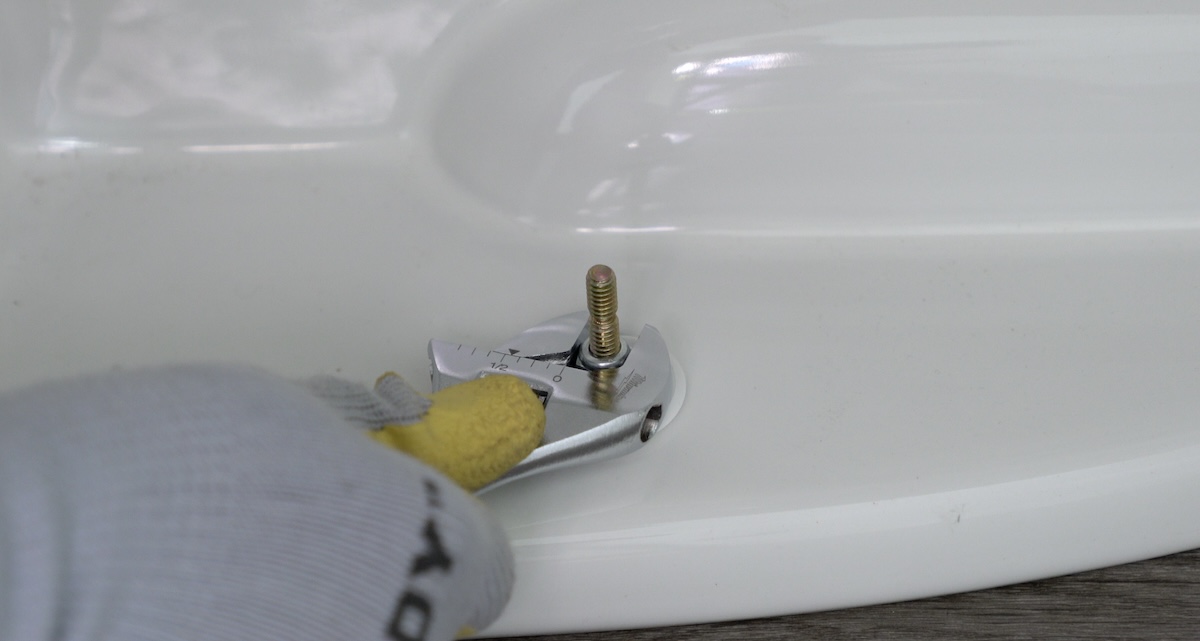Installing a toilet might seem straightforward, but when it comes to tightening the bolts at its base, many people become understandably cautious. Over-tightening can lead to cracking the porcelain, resulting in costly repairs or replacements.
Toilets are typically made from vitreous china, a type of porcelain that is strong but brittle. Applying too much force when tightening the bolts can cause the porcelain to crack or shatter. Keep in mind that the bolts are meant to keep the toilet stable, not to anchor it down. The weight of the toilet and water tank will hold your toilet down.
Begin by carefully lowering the toilet onto the floor flange, ensuring the bolts pass through the mounting holes on the base. Use your body weight to compress the wax ring by sitting on the toilet facing the tank. This step helps create a secure seal between the toilet and the flange. Always use the plastic washer that comes with the bolt cap. This washer is designed to sit between the nut and the porcelain, helping to absorb pressure during tightening and reducing the risk of cracking. Place the plastic washer over each bolt before adding a rubber or additional washer, followed by the metal washer and nut.

Start tightening the nuts by hand to ensure the toilet is seated evenly and to minimize the chance of over-tightening. Use a wrench to give each nut a small turn—about a quarter to half a turn—alternating between each side. This ensures even pressure distribution. Keep an eye on the plastic washer. Once it starts to compress noticeably, it’s a sign that the bolts are tight enough. A wrench with a short handle is ideal to avoid applying excessive torque, and choking up on the wrench can also help control the amount of force you apply.
Sit on the toilet again to check for any movement. Once the toilet is stable, flush it to ensure there’s no leakage at the base. If the bolts protrude too far above the nuts, trim them down and install the decorative caps.
By following these steps and taking your time, you can secure your toilet firmly and prevent movement. Then you’ll have a stable toilet that functions perfectly for years to come.
Disclosure: We might earn commission from qualifying purchases. The commission help keep the rest of my content free, so thank you!



